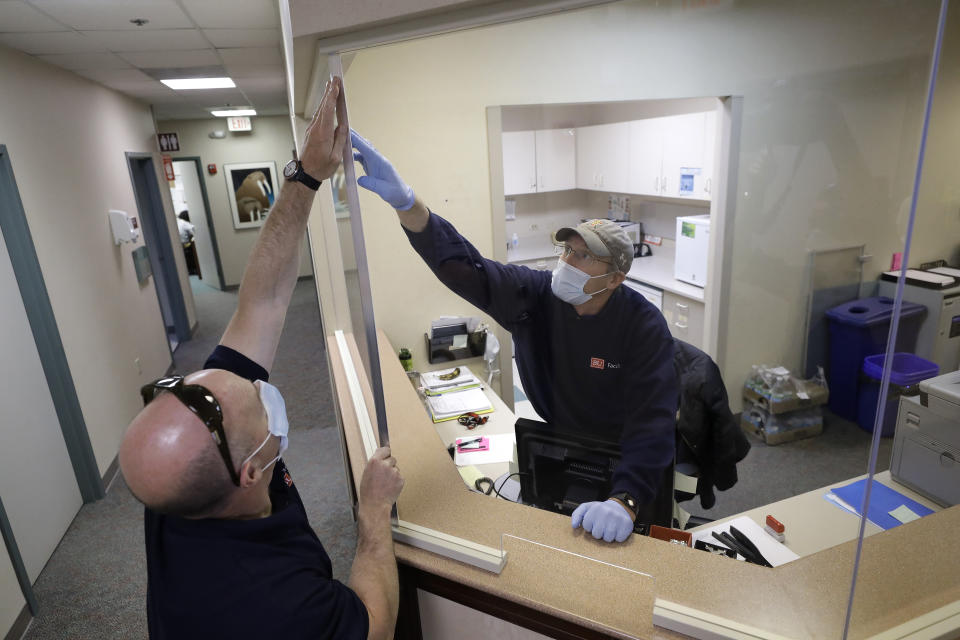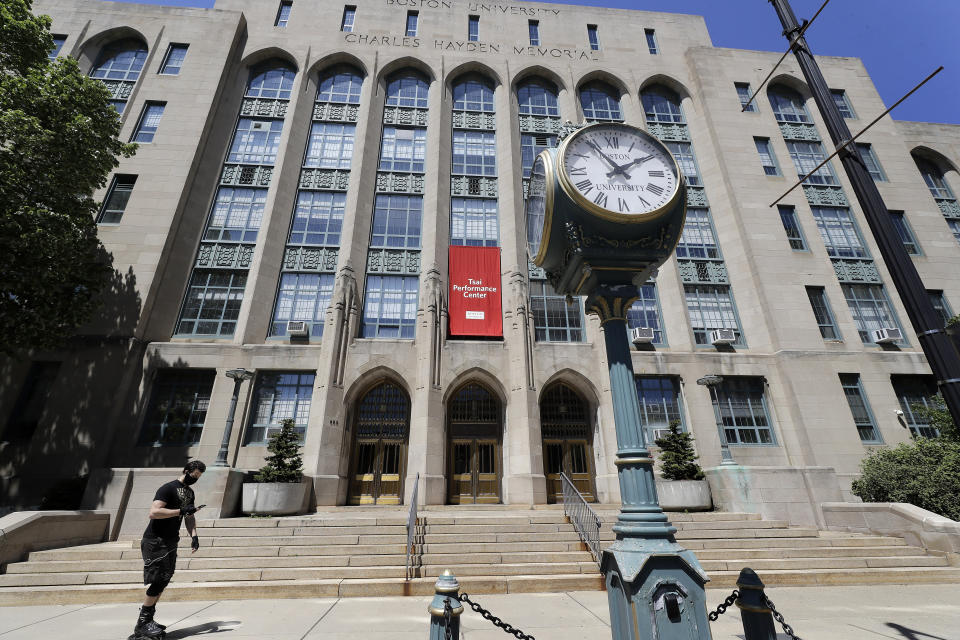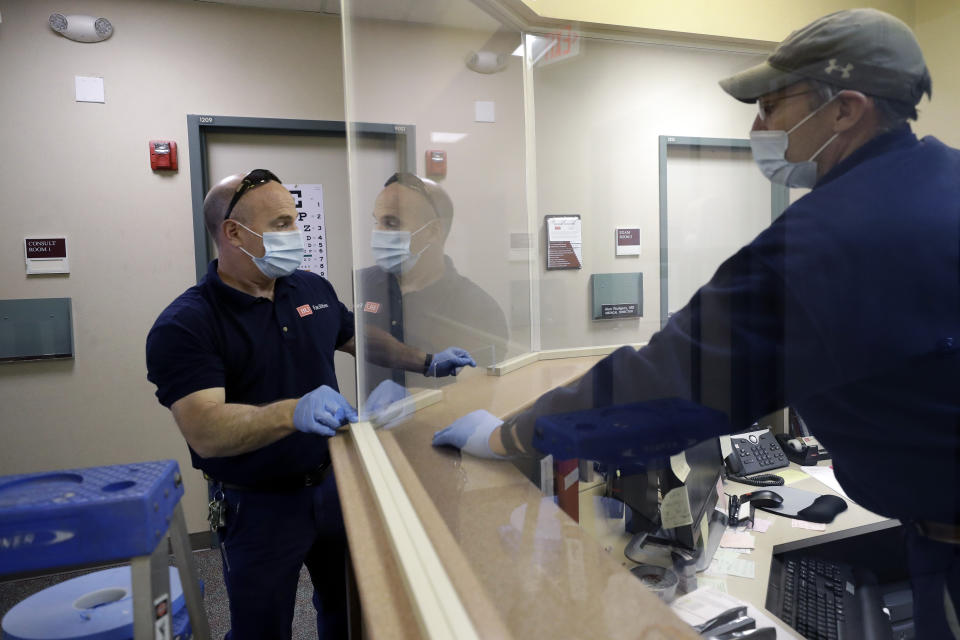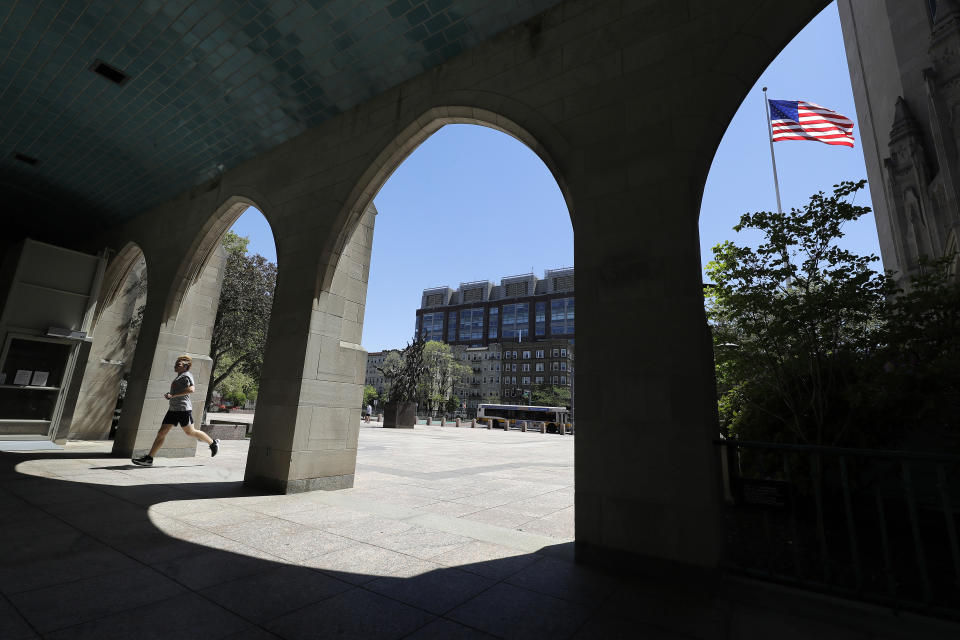Colleges plan fall opening, but campuses won't look the same
Growing numbers of U.S. colleges are pledging to reopen this fall, with dramatic changes to campus life to keep the coronavirus at bay. Big lectures will be a thing of the past. Dorms will will be nowhere near capacity. Students will face mandatory virus testing. And at some smaller schools, students may be barred from leaving campus.
Even as some universities abandon hope of in-person instruction next semester, citing concerns from public health officials, dozens are announcing plans to welcome students back in August. They acknowledge that an outbreak could force classes back online, but many of their leaders say the financial and political pressures to reopen are too large to ignore.
At West Virginia University, President E. Gordon Gee said students don’t want to wait for a vaccine, and the school can’t afford to.
“If it was simply based on science, we would keep everything shut down until we have a vaccine and until it’s working. But I don’t feel that that’s feasible, either economically or socially, and certainly not educationally,” Gee said. “We will open, but it will be different.”
Colleges planning to reopen include Purdue University, Texas A&M University, the University of Notre Dame and statewide systems in Arizona, Florida, New Hampshire and elsewhere. Some plan to make decisions this summer, including Princeton University, where officials say it's too soon to make a call.
The California State University system, by contrast, has said its 23 campuses will stay mostly online this fall, citing predictions of a virus resurgence later this year. Others including the University of South Carolina, Rice and Creighton universities plan to bring students back but end the term early, before Thanksgiving, anticipating a second wave could hit later in the fall.
President Donald Trump has encouraged schools to reopen despite concerns from his top infectious disease expert, Dr. Anthony Fauci. Speaking at a Senate hearing last week, Fauci said it would be “a bit of a bridge too far” to expect a vaccine before the fall. Trump countered that the comment was "not an acceptable answer.”
New guidelines issued by the Centers for Disease Control and Prevention this week say colleges should work with state and local officials to decide how to reopen. But the agency suggests a range of safety measures for campuses, saying they should keep common spaces closed if possible, hold smaller classes in larger rooms, and install plastic barriers in areas where it's hard to stay apart.
In other countries emerging from lockdown, universities have been slow to reopen. Primary schools in France were allowed to reopen earlier this month, but universities are expected to remain closed through the summer. Universities in New Zealand have been granted permission to reopen, but most say they plan to stay online until July or later.
Britain's Cambridge University announced Wednesday that all in-person lectures will be canceled through the 2020-21 academic year because of the pandemic.
In the U.S., colleges that plan to reopen have told students to expect strict social distancing measures, including mandatory use of face masks. College leaders say widespread virus testing will be the linchpin to a safe reopening. At many schools, students who test positive would be placed in dorm rooms reserved as quarantine space.
But there are questions about schools’ ability to provide large numbers of tests. Some research universities say they have the lab equipment to analyze virus tests, but not enough swabs and testing chemicals. Smaller schools will need to hire companies to handle tests, likely at a significant cost.
In a call with 14 university leaders last week, Vice President Mike Pence pledged to help colleges ramp up testing operations. But some on the call said details, especially about funding, remain hazy.
“This testing is going to cost money, and many academic institutions are already going to be fiscally challenged,” said Michael Lovell, president of Marquette University in Milwaukee, Wisconsin. “There’s not a clear path from an institutional point of view.”
Once students are back on campus, the primary goal will be to keep them spaced out, colleges say. Classroom desks will be arranged 6 feet apart. Class schedules may be staggered. Big lectures will be split up or moved online. Some colleges are discussing teaching certain classes outside or in tents.
A growing number of colleges say they will offer a “hybrid flex” model, in which classes are offered online and in person at the same time, and students can choose either option. Professors at some colleges will also be allowed to continue teaching remotely through video feeds projected in the classroom.
Most vexing for colleges, however, is the dilemma of dorm life. At some schools, suites meant for several students will be limited to one or two. Bathrooms shared by entire floors will be restricted to a handful of students. With only so much dorm space, some colleges have been scrambling to rent nearby apartments as overflow housing.
At Trinity College, a school of 2,000 in Hartford, Connecticut, officials hope to place every student in their own room. Staff members have been scouring campus with tape measures in recent weeks to make sure students will have space to stay 6 feet apart.
“I have a huge incentive to want to reopen. I want to see our students. I want to see them educated in the best way possible,” Trinity President Joanne Berger-Sweeney said. “And I also want to remain a significant and good employer in the state of Connecticut at a time when that’s really important.”
Boston University is exploring whether the housing problem can be solved by placing students into “family groups” that live together but have little social interaction with other groups. Robert Brown, the school's president, said placing all students alone “may be overly isolating for students and lead to another set of problems.”
At Claremont McKenna College near Los Angeles, officials are wondering how their single dining hall will accommodate 900 students who buy meal plans. The school is weighing measures to restrict capacity in the hall, which may require students to eat in shifts or take their meals outside.
It's just one way in which campus life will “not be the same as what we have grown so accustomed to,” said Hiram Chodosh, president of the college.
Hoping to keep the virus away, some smaller colleges are considering limits or even outright bans on travel in and out of campus. In a recent letter to students, Amherst College in Massachusetts said officials “may need to require that you limit your movement to on-campus locations only.”
At West Virginia, Gee said he'll rely on students to police their own behavior. He argues that peer pressure is more effective "than a 76-year-old university president saying don’t do it.” Gee, known for his impromptu appearances at student activities on campus and off, said he will scale back this fall, much to his chagrin.
“It’s going to be a lot different for me, and I’m going to miss that,” Gee said. “But I view us as dancing with the coronavirus. This is going to be with us forever, even once we find a vaccine. We just need to learn how to manage it in a way that allows life to go on.”



